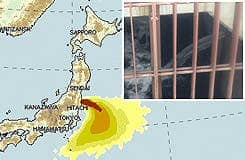Radioactivity is still persisting in the ocean waters near the Fukushima nuclear plant, despite researchers expectation to drop.


But nobody was expecting the levels to remain at these levels.
“There must be a source,” says Scott Fowler, an oceanographer at Stony Brook University in New York.
A new model created by oceanographer Jota Kanda at the Tokyo University of Marine Science and Technology suggest that not one, but three sources are causing this remanent radioactivity. The first is radioactivity from the land is being washed by rainfall into rivers, which carry it to the sea; second, the plant itself continuously leaks.
But the third source is the most important, he says. Marine sediments, he explains, are responsible for over 90 percent of the continuous contamination. Analysis showed a large quantity of radioactive caesium in sandy ocean floor near the plant. It may be that the sediment itself absorbed the caesium, or perhaps microorganisms such as plankton fed on it, and then excreted it to the bottom of the ocean.
Whether originating from plankton or sediment, the contamination is finding its way into the food chain. Bottom dwelling fish show levels above the level considered ‘safe’; other species are only sometimes contaminated, while squid and octopuses are contamination free. The implications are extremely serious for the fishing industries, who estimate a loss of about $2 billion.
Scientific source









